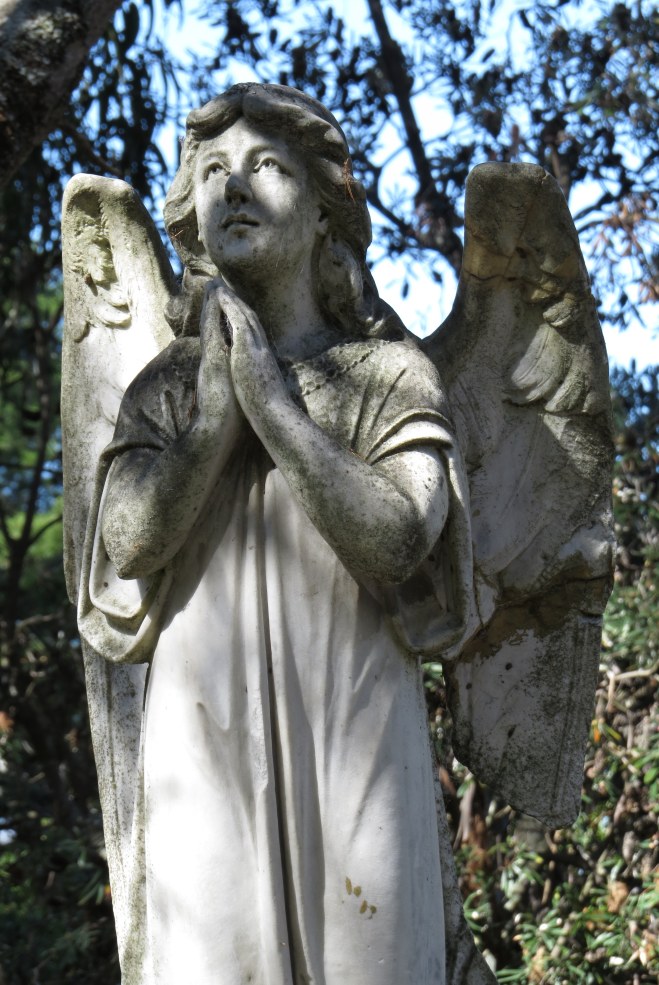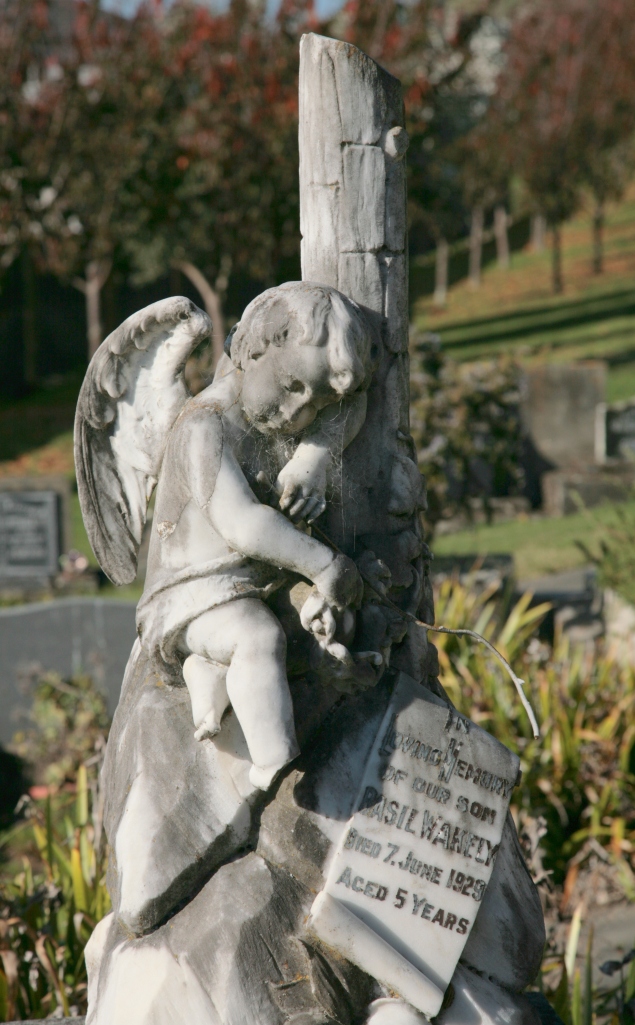As the car engine grew louder, the sound of raised voices echoed across the graveyard and I realized it was too late to make it over to the gum trees. So, grabbing my iPod, I headed for the grave of Charlotte Pyke, who had passed away in 1876. Although the weathered stone angel on top of her headstone had lost one of its wings long ago, the stone statue was the tallest in the graveyard and I figured it would be plenty tall enough to keep me hidden from view. Sinking down onto the cold concrete, I turned up the collar of my coat and prayed that my black hair and dark clothes would help me blend into the night.
From Where the Moths Dance
There is something about angel headstones that draw me to them when wandering around old graveyards.
In the nineteenth century, when elaborate headstones became popular, beautiful angels were carved by skilled, local stonemasons. By the late nineteenth century, however, headstones were being mass-produced and, sadly, the services of the local stonemasons were no longer required.
With their heads bowed, these stone angels portray a strong sense of loss and sorrow,
While angels looking skyward are seen to be guiding the deceased to heaven.
The most elaborately carved angels that we see are very old, covered with moss and cobwebs, some with broken wings
It is amazing how these carved pieces of gray stone can evoke such strong feelings, especially when they mark the burial place of a young child.










